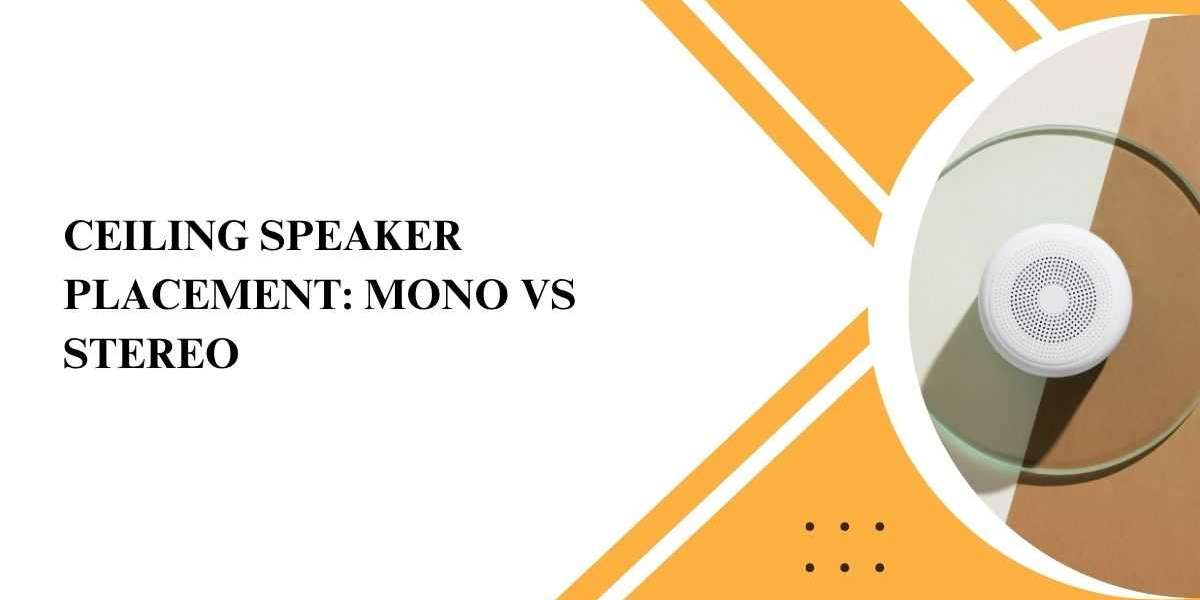When designing a professional or commercial audio system, one of the most important decisions revolves around whether to use a mono or stereo configuration. While both options have their place in AV design, choosing the right one—and placing speakers correctly—can significantly affect sound quality and user experience. Whether it is background music in a café, audio in a meeting room, or immersive sound in a luxury hotel suite, the choice between mono and stereo setups determines how listeners perceive audio in the space. A key part of this decision is effective Ceiling Speaker Placement, and that is where XTEN-AV steps in to help designers and integrators plan with confidence and accuracy.
XTEN-AV: The Smarter Way to Design Audio Systems
XTEN-AV is a cloud-based AV design and documentation platform that offers powerful tools for planning ceiling speaker layouts. It simplifies complex decisions by automating calculations, simulating speaker coverage, and helping AV professionals visualize how different configurations—mono or stereo—will perform in real-world spaces. From drag-and-drop layouts to preloaded speaker libraries and auto-generated documentation, XTEN-AV makes Ceiling Speaker Placement seamless and error-free.
When deciding between mono and stereo ceiling speaker configurations, XTEN-AV allows users to test coverage, plan zones, and optimize the system to match the use case and architectural layout.
Understanding Mono and Stereo Audio
Before diving into layout strategies, it is important to understand the core difference between mono and stereo sound.
Mono (monophonic) audio uses a single audio channel. All speakers play the same signal, meaning there is no separation of instruments, vocals, or audio effects across the sound field.
Stereo (stereophonic) audio uses two audio channels—left and right. Different sounds are assigned to each channel, creating a sense of direction, depth, and spatial awareness for the listener.
In residential or performance-oriented setups, stereo is preferred for a more immersive experience. In commercial settings like offices or hallways, mono is often sufficient and more practical.
Ceiling Speaker Placement in Mono Systems
Mono systems are generally simpler to design and implement, especially in large spaces where consistent coverage is more important than stereo imaging. This setup is ideal for background music, paging, and announcements.
Best practices for mono ceiling speaker layouts:
Even Spacing for Uniform Coverage
Speakers in a mono system should be spaced evenly to provide smooth, uninterrupted audio across the room. XTEN-AV helps calculate optimal spacing based on ceiling height and speaker dispersion angles, ensuring no overlaps or gaps in coverage.
Avoid Overhead Echo Zones
In mono configurations, placing speakers too close to hard surfaces can cause unwanted reflections. XTEN-AV allows designers to visualize speaker locations relative to walls and furniture, helping reduce echo and improve sound clarity.
Zoning for Control
Even in a mono system, different areas of the space may require different volume levels. XTEN-AV allows users to assign speakers to zones, offering volume control for specific areas without affecting the entire system.
Ideal Use Cases for Mono
Hotel corridors
Office ceilings
Retail stores
Large open-plan workspaces
Conference centers for voice reinforcement
For these applications, mono sound offers clarity and reliability without the need for channel balancing.
Ceiling Speaker Placement in Stereo Systems
Stereo systems provide a more dynamic and immersive sound experience by creating left and right audio channels. However, stereo setups are more complex and require precise speaker placement to be effective.
Best practices for stereo ceiling speaker layouts:
Pairing Speakers Correctly
In stereo configurations, speakers must be placed in pairs—one for the left channel and one for the right. XTEN-AV allows you to group speakers and assign them to specific channels for accurate placement.
Maintaining Listening Position Symmetry
For stereo imaging to work, the listener should be positioned between the left and right speakers. In fixed-seating environments like lounges or hotel suites, XTEN-AV helps align speakers with seating zones to preserve the stereo effect.
Avoiding Channel Crossovers
If left and right channels are spaced too far apart, listeners may hear only one channel or distorted sound. XTEN-AV enables visual layouts with speaker coverage circles, so designers can see where stereo imaging will succeed or fail.
Ideal Use Cases for Stereo
High-end residential spaces
Executive offices
Lounges and bars
Boutique hotel rooms
Conference rooms with AV presentations
Stereo is best used when spatial audio quality enhances the experience and the room layout supports proper channel separation.
Using XTEN-AV to Decide Between Mono and Stereo
XTEN-AV gives AV professionals a side-by-side way to compare mono and stereo setups. By overlaying speaker coverage, assigning channels, and visualizing sound fields, you can make informed decisions about which configuration fits the room’s purpose.
Here is how to do it with XTEN-AV:
Import or create the room layout
Select the appropriate speaker models from the device library
Place speakers on the ceiling plan
Use XTEN-AV’s auto-calculation tools to determine spacing and dispersion
Assign mono or stereo channel paths and test coverage visually
Create separate zones if needed, with volume control options
Export documentation including floorplans, speaker schedules, and wiring diagrams
This smart workflow ensures that every decision around Ceiling Speaker Placement supports the chosen audio strategy, whether mono or stereo.
Making the Right Choice: Mono or Stereo?
To help you decide, here is a quick comparison:
| Feature | Mono | Stereo |
|---|---|---|
| Simplicity | Easy to design and install | Requires precise layout |
| Coverage | Consistent across large areas | Best for defined listening zones |
| Cost | Generally lower | Slightly higher due to more equipment |
| Audio Experience | Functional and clear | Immersive and directional |
| Ideal For | Offices, lobbies, retail, paging | Lounges, suites, boardrooms |
If the space prioritizes clarity and coverage over directional sound, mono is likely the better choice. If the experience depends on spatial depth and stereo effects, stereo offers more value.
Conclusion
Choosing between mono and stereo configurations is a critical decision in audio system design, especially when it comes to Ceiling Speaker Placement. Each approach has its strengths depending on the application, room layout, and user experience goals. With XTEN-AV, AV integrators and designers have a reliable platform to evaluate both options, plan detailed layouts, and simulate real-world results.
Whether you are designing a paging system for a corporate office or a premium stereo setup for a hospitality lounge, XTEN-AV provides all the tools needed to execute your vision with accuracy and professionalism. In the debate of mono vs stereo, the real winner is smart design—and XTEN-AV helps you achieve just that.
Read more: https://www.florevit.com/read-blog/41070








